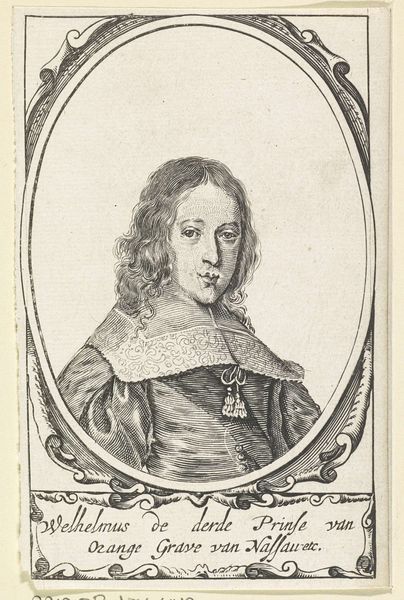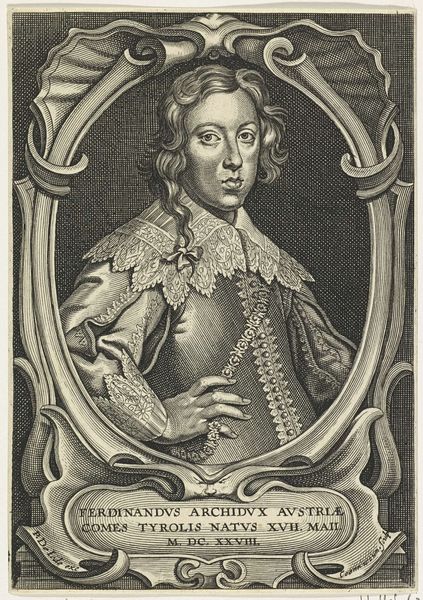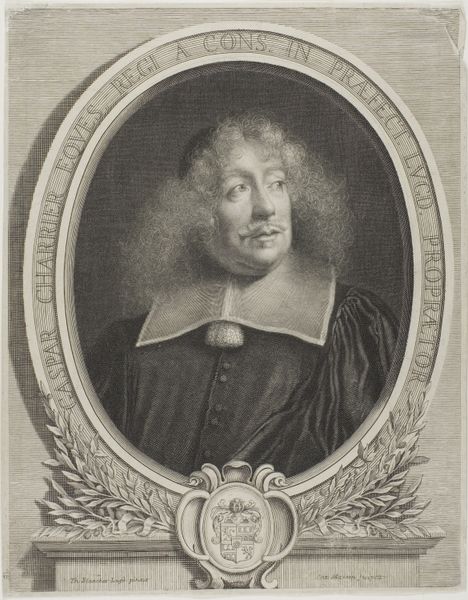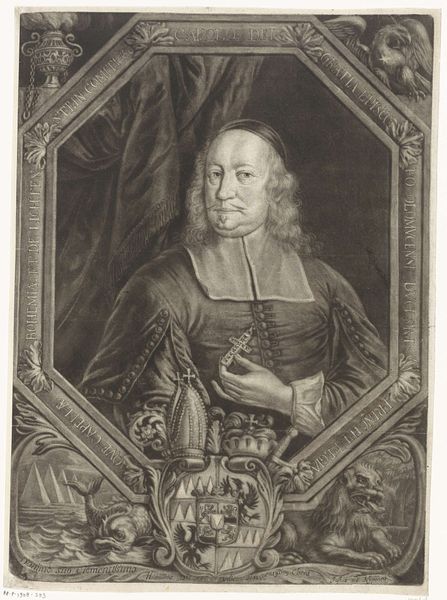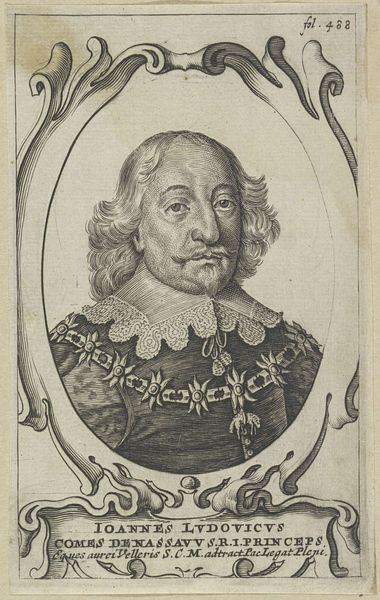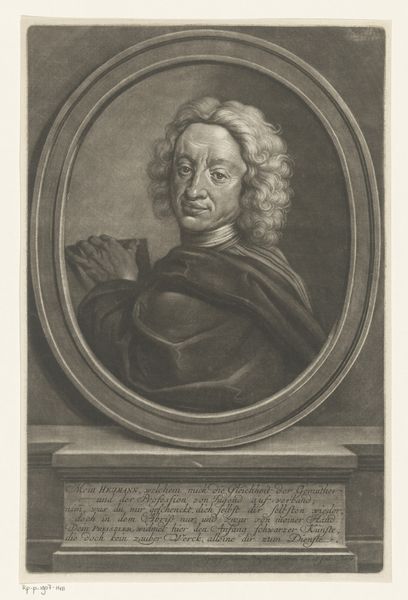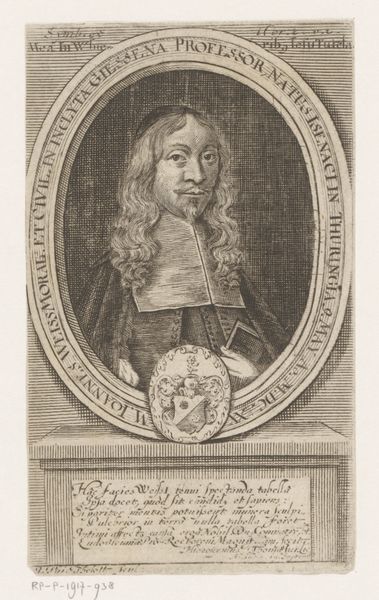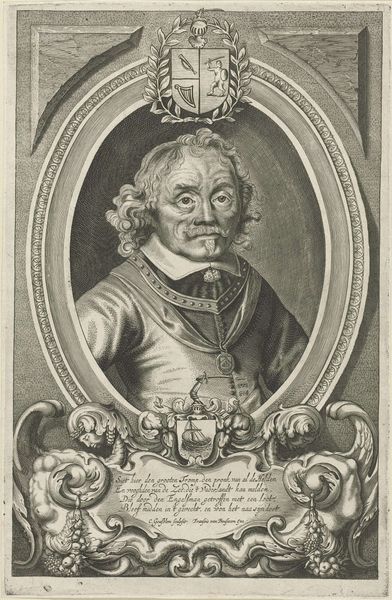
print, engraving
#
portrait
#
baroque
# print
#
portrait drawing
#
engraving
Dimensions: height 149 mm, width 93 mm
Copyright: Rijks Museum: Open Domain
Editor: This is a print from 1656, a portrait of Johan de Brune by Theodor Matham. It's striking how much detail is packed into such a small engraving! It seems very formal, almost severe. What stands out to you when you look at it? Curator: The symbolic framework is what grabs me immediately. Look closely – above Johan de Brune’s head, we see “SPE ET METU.” Hope and Fear. A very humanistic tension to introduce a portrait. Does that interplay of opposing forces tell us something about how De Brune saw himself, or how he wished to be perceived? Editor: Hope and Fear... That's interesting. I hadn't considered it going beyond just a biographical portrait. Does his clothing signify anything particular, then? Curator: Absolutely. His attire, though seemingly simple, speaks to his status and role as Raed-Pensionaris, effectively a legal advisor, suggested here by the subtle but defined legal bands, while the curtain behind hints at a theatricality that would be fitting for someone in the public eye. It's a calculated image. What do *you* see as being ‘staged’ here? Editor: I suppose the text is also staged, presented in an ornamental cartouche to amplify Johan de Brune’s status. It’s not just a name; it's a statement. I learned that even in portraiture, artists employed deliberate symbolism! Curator: Indeed. The symbolic language embedded within portraits is incredibly powerful in conveying both individual identity and collective memory, speaking volumes about a culture’s values and self-perception.
Comments
No comments
Be the first to comment and join the conversation on the ultimate creative platform.


